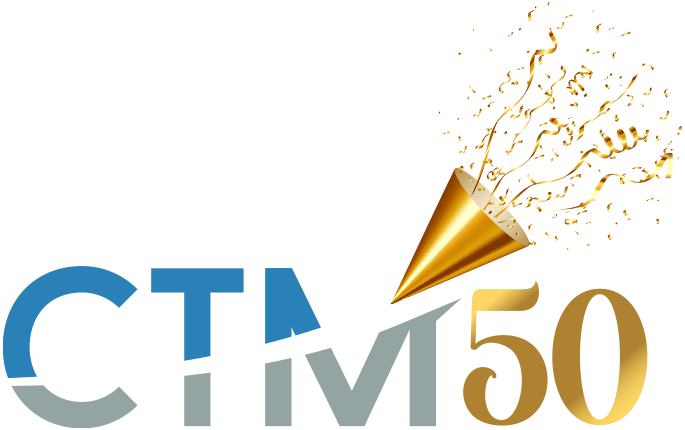At this point, everyone has heard something positive about the Tax Cuts and Jobs Act (TCJA)… “It’s the most expansive reform since the ’81 and ’86 Reagan Tax Acts,” “It’s essentially an aphrodisiac for businesses big and small,” or “It lowered the individual income tax rates.” All true.
One provision of the Act, however, that wasn’t intended to be a crowd-pleaser, changed the rules for deducting one of the business community’s favorite tax write-offs: meals and entertainment (M&E) expenses.
You know those Pro football games where important business is discussed? Now, non-deductible. And those golf playdates where that really important business deal gets done? Also, non-deductible.
Even the beef sandwiches this very firm annually draws upon to convince the staff that the long hours of tax season come with, ahem, “perks.” Well that, previously-100%-deductible sandwich is now 50% deductible.
Was Congress picking on food and fun when they crafted this provision? Unlikely.
It is obvious they are a cluster of very fun people.
The meals & entertainment deductibility limitations, beginning in 2018, were negotiated as an attempt to keep with the spirit of “revenue-neutral” tax reform, which generally aims to provide that there are no real tax increases or decreases in new legislation.
Someone’s taxes go up, while someone else’s goes down; and often, when new deductions are introduced, others are eliminated.
To help clarify the changes, we are going to segregate M&E expenses between fully deductible, partially deductible and non-deductible under the new law. We’ll specifically look at the reform’s impact on employer-provided meals in the food-service sector and finally, what general ledger reporting and record-keeping policies should become part of your internal accounting practices.
As an early takeaway, most MEALS are still 50% deductible, while ENTERTAINMENT is simply no longer deductible. The new law essentially put these two costs on different sides of the street.
Business Meals: What’s Stayed the Same
Taxpayers may generally continue to deduct 50% of a business meal that meets the following five criteria:
- The expense is an ordinary and necessary business expense incurred during the tax year in carrying on a trade or business,
- The meal expense is not lavish or extravagant (not defined in the Code),
- The taxpayer, or an employee of the taxpayer is present when the food or beverage is furnished,
- The food and beverages are provided to a current or potential customer, client, consultant, or similar business contact; and
- In the case of food and beverages provided during an entertainment activity, the food and beverages are purchased separately, or their cost is separately stated from the cost of the entertainment.
The law also maintained recordkeeping requirements for substantiating meal expenses:
- A receipt showing the amount of the expense and an itemized list of the food and drinks;
- The date and name of the restaurant;
- The name of the person(s) with whom you had the meal and their relation to your business (i.e., the client, potential client and employees present); and
- The business purpose of the meal (the nature of the business discussion).
The above 50%-deductibility also applies to employees’ meals while traveling and meals provided during internal business meetings comprised of employees, stockholders, partners and directors. All unchanged from prior law as well.
Business Meals: What’s Different
While the tax treatment for client-related meals was left unchanged at 50%, the deductibility for employee-related meals has been reduced.
Prior to the TCJA, meals furnished to employees for the convenience of the employer were 100% fully deductible if they were provided on or near the business premises (for example, employees working overtime and eating in a company cafeteria or break-room). Under the TCJA, and effective January 1, 2018, these meals are now 50% deductible and after 2025, completely nondeductible.
Further, food and beverages classified as de minimis fringe benefits such as coffee, water and snacks provided on-premises which used to be fully deductible are also now only 50% deductible (nondeductible after 2025). Note: the AICPA has argued that these expenses should remain 100% deductible as they could potentiality be classified as food and beverages related to employee recreation. We expect clarification here and potentially a technical correction.
The de minimis fringe classification has a particular impact on employers in the food service industry as they have historically been allowed to deduct the full cost associated with meals provided to employees immediately before, during or after their shifts. This has, effectively, only been the cost of the food as the facility and labor are already in place for normal business operations. We expect further guidance to clarify exactly how the nondeductible component of these meals should be calculated. Will it be half of the cost of the food? An applicable safe harbor method such as a flat dollar amount per employee? Another “wait and see.”
For 2018 returns prepared before final regulations are promulgated, we can advise on reasonable allocations. Ironically, one reason behind why de minimis fringe benefits were fully deductible in the first place was because the accounting for such immaterial amounts was thought to be administratively impractical!
Entertainment: What’s Stayed the Same
Almost nothing (except the following):
Entertainment provided primarily for the benefit of employees remains 100% deductible. This would include the office holiday party, annual picnic and other recreational activities such as a company-provided swimming pool, golf course, or work-out facility.
Also remaining fully deductible is entertainment treated as compensation to an employee. For example, if an employer rewards an employee with a vacation and treats the expense as taxable (W-2) wages to the employee, the employer can deduct the full cost of the vacation (which would of course be deductible as wages instead of “entertainment”).
That’s it.
Now to ease into what has changed, let’s remember that while the deductibility of entertainment has changed, the definition of entertainment has not.
Reg. §1.274-2(b)(1)(i) defines “entertainment” as: any activity generally considered to constitute entertainment, amusement or recreation such as entertaining at nightclubs, cocktail lounges, theaters, country clubs, golf and athletic clubs, sporting events, and on hunting, fishing, vacation, and similar trips, including such activities relating solely to the taxpayer or the taxpayer’s family.
Now, ladies, I know. Golf? Hunting?? Fishing???! I’m totally with you. One. Thousand. Percent more “punishment” than “entertainment.” I didn’t write the Reg.
The definition, however, gains importance when we see that the law has eliminated the deductibility for these expenses, and just how necessary segregating entertainment expenses from meal expenses has now become.
Entertainment: What’s Different
Under the new law, amounts paid or incurred for business-related entertainment after December 31, 2017 are no longer deductible. This includes all of the above activities identified in Reg. §1.274-2(b)(1)(i); sporting events and golf outings being the most common.
When the new law was first introduced, some confusion surrounded the deductibility of meals during or at an activity considered to be entertainment. Taxpayers were somewhat left in limbo wondering if these entertainment-related meals fell under the purview of “entertainment,” and were therefore, also categorized nondeductible.
After prodding from the business community as well as the AICPA, the IRS issued guidance in October 2018 with Notice 2018-76 clarifying that food and beverages that are provided during entertainment events will not be considered entertainment if purchased separately from the event, provided all of the above (old) requirements relating to the deductibility of meals are satisfied.
So, while the golf game is no longer deductible, the lunch purchased during will continue to be 50% deductible as long as there is a separate receipt for the lunch or it is separately stated on the bill that also shows the cost of the golf.
Same would go for a client dinner before a theater show or baseball game; separately stated is required, otherwise the entire cost is considered nondeductible entertainment.
The IRS has committed to publishing final regulations echoing the “separately stated” safe harbor with respect to entertainment-related meals. In the meantime, however, taxpayers can comfortably rely on Notice 2018-76 as authority.
In a nutshell, the old package deal of “Meals and Entertainment” has effectively been replaced by “Meals versus Entertainment.”
Recordkeeping
The manner in which expenses are recorded in accounting records is more important than ever with respect to M&E. While businesses operate under the new law, one event may easily have different expenses with varying deductibility. Ideally, assigning expenses to their proper accounts should be done in real time as waiting until yearend to “scrub the ledger” can be painful. At a minimum, we recommend three separate general ledger accounts:
- Meals – 100% Deductible: for the celebratory events for employees and related meals.
- Meals – 50% Deductible: for client meals where business is discussed & employees’ meals while traveling.
- Entertainment – Nondeductible: for sporting events, golf, and other amusement activities mentioned above.
Receipts for ALL meals and entertainment are an absolute necessity. Credit card statements alone would not be sufficient support if deductibility was challenged under audit. Remember the ‘business purpose’ requirements above and make notes or narratives on receipts contemporaneously with each event.
Because the TCJA was passed so late in 2017 and the first round of guidance only came out in October 2018 (with more yet to come), business owners will face accounting challenges in this first year. We can help you fine-tune your internal accounting practices with each technical correction and newly issued set of Regulations.
For now, you can use the quick reference chart below as a summary of the above changes, plus some not-so-common others. We hope you find it useful.
And please call our office before putting any of your employees on a diet or resigning to the fact that you now have to use your imagination for good, old-fashioned, free entertainment. We’re here to help you find the most tax-efficient options, so you can still over-eat and have a little fun on the clock.










